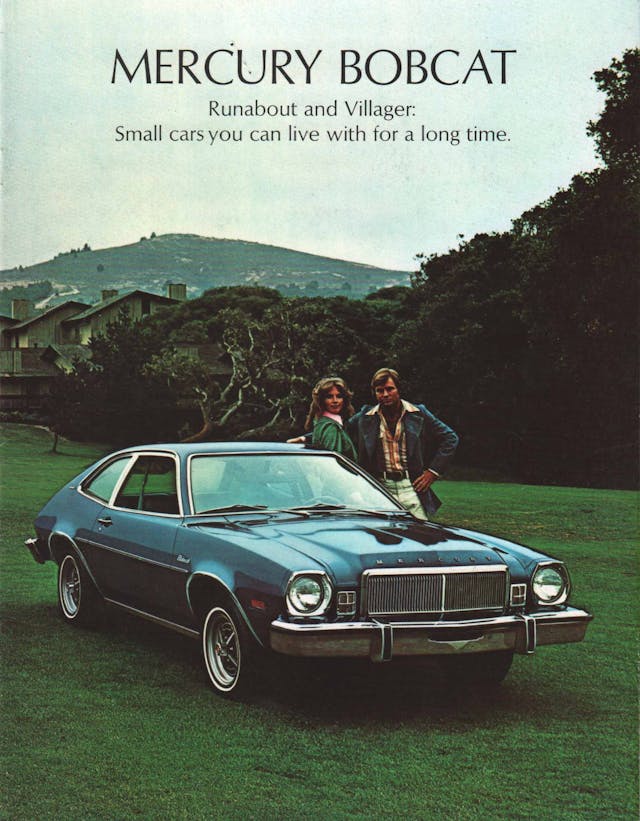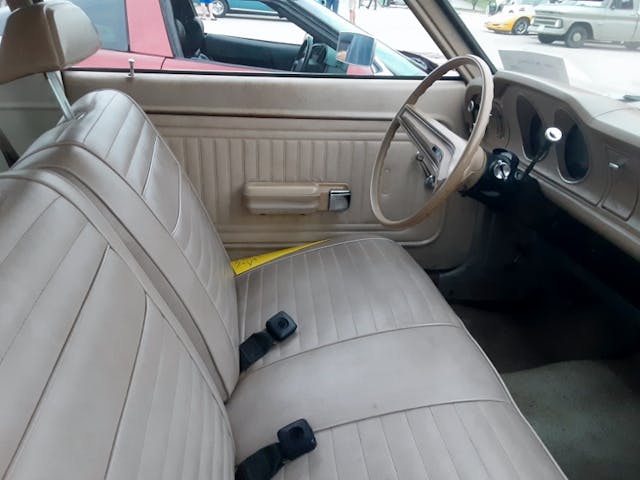Media | Articles
1971 Mercury Comet: The Mini Merc

Mercury. Has it really been a dozen years since the brand disappeared from the face of the earth? Hard to believe. But yes, the last Mercury built, a Broughamtastic 2011 Grand Marquis, came off the line in early 2011. It’s just one of several marques that have vaporized since I was a kid—including Oldsmobile, Plymouth, and Saab, among others.
But back in the late 1960s and early ’70s, Mercury was an important part of Ford Motor Company. While Ford was naturally the volume seller, Mercury fought the good fight for middle and upper middle-class customers against Oldsmobile, Chrysler, and Buick.

The Comet morphed throughout its lifetime. The original 1960 Comet was intended to be a small Edsel, but that fiasco and the resulting short life of Edsel Division meant it was sold through Mercury dealers instead. Later in the decade it became an intermediate; a Cardinal Red ’66 Comet Cyclone convertible paced the Indy 500 that year.
But times were changing, and the Montego, originally an upmarket Comet starting in 1968, became the entire midsize line. As a result, the Comet nameplate was moved back into compact territory, as a version of the 1970 Ford Maverick.
Although the Cougar had been introduced in 1967, the ’71 Comet was smaller than the average Mercury had been, especially the Nimitz-class Marquis Brougham, Monterey, and Colony Park station wagon.
Marketplace
Buy and sell classics with confidence
And so it was that the 1971 Comet was the smallest, and of course, lowest cost Mercury offering, at 181.7 inches long and having a 103-inch wheelbase (the four-door got a 109.9-inch span). The base two-door started at $2217 ($16,377 today); the sedan, $2276 ($16,813).
As the 1971 brochure advised, “How do you make a better small car? Mercury has the answer. Take the best small car ideas, like easy handling, simplified maintenance, low price and great gas mileage. Add big car styling without skimping on extras. Make big car performance available with either a standard 170-cu-in six, or a choice of two optional bigger six-cylinders, or 302 two-barrel V-8, all of which can use regular, 91-octane gas.

“Result: the all-new Comet for ’71, available in three fine models.” That said, standard equipment was pretty sparse for a Mercury, though it did include carpeting, front and rear armrests, and a cigar lighter. An Exterior Décor Group dressed it up more appropriately, with bright rocker panel, upper bodyside and roof moldings, full wheel covers (same type as shared with non-XR-7 Cougars), and a deluxe gas cap. There was also a GT model, which added the expected stripes, scoops, bucket seats, and a blacked-out grille.
The base 170-cu-in six had 100 horsepower, with a 115-hp 200-cu-in six, 155-hp 200-cu-in six, and the top-dog, 210-hp 302 V-8 available optionally. The biggest difference between the Comet and its Maverick cousin was up front, with the “power dome” hood and protruding center grille giving it a more important look over the Ford version. Out back, a quartet of taillights borrowed from the midsize Montego replaced the more basic looking Maverick units.
For the model year, 54,884 coupes and 28,116 sedans were built. That was small potatoes compared to its corporate sibling the Maverick, which saw 73,208 sedans, 159,726 coupes, and 38,963 of the sportier Grabber coupes sold for 1971.
The Comet carried on in pretty much the same form all the way through the 1977 model year, the primary difference being the larger front bumper being added in 1973 and a matching rear bumper in ’74.

And starting in 1975, it would no longer be the smallest Mercury in the dealership, as the Pinto-based Bobcat joined the lineup with a similar power dome hood and fancier-looking grille compared to the Ford version. It would last through 1980.
Our featured car was spotted at the monthly Coralville, Iowa, cruise night held at the Coral Ridge Mall back in July 2021. I zeroed in on it right away. I hadn’t seen one in a LONG time, so I took many pictures. It was a very nice survivor, a base model with no decor groups and seemingly few options. It was even still sporting its original Mercury hubcaps. I appreciated its honesty. It was pretty cool!
Check out the Hagerty Media homepage so you don’t miss a single story, or better yet, bookmark it. To get our best stories delivered right to your inbox, subscribe to our newsletters.


























A friend got a brand new 1976 Comet 2 door as his first car. Knowing it was based on a Maverick (what time is it when one Maverick follows another down the road? Tin after tin!), my expectations were really low. Boy was I surprised! The interior, while not plush, used quality materials, and the whole car was tight and rattle-free.
He only kept it for about a year, so I can’t comment on long term reliability (though as a group the Maverick cars held up pretty well mechanically) or body integrity (not so much).
I’m not a Ford guy but I do kinda keep my eye out in case a nice one crosses my path.
By the time Mercury disappeared, all its models had for some years been nearly indistinguishable from its Ford cousins (more like twin brothers.) They were simply Fords with different grills and taillights. Just another example of a once proud marque destroyed by beancounters who were clueless about what the customer wanted. Ditto Plymouth/Dodge, and many of the GM corporate siblings. Sad…
I remember a ride in the back seat of a Comet in ’72. We went through a slight dip in the road and both of us in the back seat bashed our heads on that “sleek roofline”. Another friend, in ’82, found the body shell of one of the ’66 Indy pace cars, converted to some sort of drag car. Some idiot had given it a quicky paint job without even removing the graphics, you could see the outlines and stripes under the paint. Mercury had a very cool logo.
Looking at the ad for the Bobcat, the car to me just didn’t work. It looked too luxurious for it’s class like it would have had a hard time finding buyers. Young people would have thought it to be too formal looking and older people would have looked like losers driving it. The guy in the ad looked like he would have at least rated a Montego.
I have a 72 Mercury comet GT
351 w 9″ everything else you can think of
In it
Kitchen sink coming next week
My sister bought a new 74 comet with shag carpet and an 8-track. It had color-keyed wheel covers and the huge bumpers. It felt solid and heavy, with a 302 that she thought was fast until my brother humbled her with his 67 mustang 390 one day. The temp light came on one night and she thought that she would ask dad what to do when she got home. She locked it up. The next day we went out and it had cooled off and ran fine (but with a shorter lifespan I’m sure). That was before aluminum heads, of course.
I liked the mavericks and comets, good simple cars that were easy to work on (except the rear plug on the passenger side of the 302- when I changed it for her it had not been changed with the others for who knows how long).
91 octane regular. Yes there was a time.
If the interior was black and it has a 3 on the tree instead of the automatic, that Comet would be a twin of the one my mother bought back in ‘71. Not the most reliable car our family owned, but good memories none the less.